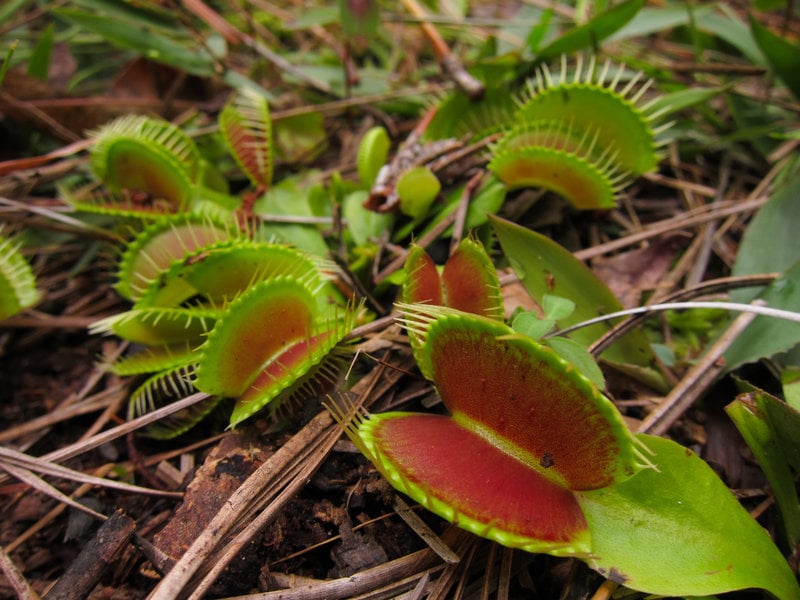There are 600 known species of carnivorous plants in the world. The Venus Flytrap is one of the most common carnivorous plants. They are native to the East Coast of the United States.
The Venus flytrap is naturally found in only a number of places in the US. They are commonly seen in the North and South Carolina area. Park rangers have to keep the grow sites a secret to prevent poachers from taking them.
The Venus Flytrap
It is also known as Dionaea muscipula. It is part of the Droseraceae family. They are commonly found in the subtropical wetlands and is endemic to the East Coast.
The name of the plant comes from Venus, the Roman goddess of love. The genus name Dionaea literally translates to “daughter of Dione” referring to the Greek goddess Aphrodite. It was also called tipitiwitchet since it has a striking resemblance to the female genitalia. By 1786, John Ellis, gave the plant its official scientific name. (Source: Flytrap Care)
They are perennial plants with white flowers. Each trap of the plant can only close and open for a certain amount of times before they die and fall off. Then, the plant produces another trap from its underground stems.
These plants have a life expectancy of 20 years or more. (Source: National Wildlife Federation)
When was the Venus Flytrap Discovered?
In April 1759, a colonial governor by the name of Arthur Dobbs wrote the first description of the Venus Flytrap. By 1970, he wrote a letter to Peter Collinson, an English botanist. He started describing the plant in much detail.
An excerpt from the letter to Collinson:
The great wonder of the vegetable kingdom is a very curious unknown species of Sensitive. It is a dwarf plant. The leaves are like a narrow segment of a sphere, consisting of two parts, like the cap of a spring purse, the concave part outwards, each of which falls back with indented edges (like an iron spring fox-trap); upon anything touching the leaves, or falling between them, they instantly close like a spring trap, and confine any insect or anything that falls between them. It bears a white flower. To this surprising plant I have given the name of Fly trap Sensitive.
Arthur Dobbs
This was the first record of the plant, way before John Ellis sent a notice to Carl Linnaeus in 1978 about it. (Source: Flytrap Care)
Is the Venus Flytrap Endangered?
As of today, the Venus flytrap is listed as vulnerable. Although, the federal government is considering to add the plant on the endangered species list. This is due to over collection and habitat destruction. (Source: National Wildlife Federation)
The park rangers at the Carolina Beach State Park go the extra mile in protecting the plant. Poaching is a huge problem, that the rangers keep the location of these plants a secret. (Source: Walking on Travels)
What Does the Venus Flytrap Eat?
Although they are carnivorous plants, they do not rely on catching food to survive. The Venus Flytrap acquires nutrition primarily from the soil. To add supplements to its nutrition, they eat insects and arachnids.
It usually takes 3 to 5 days for the plant to completely digest an insect. It may go months before eating again. (Source: National Wildlife Federation)
